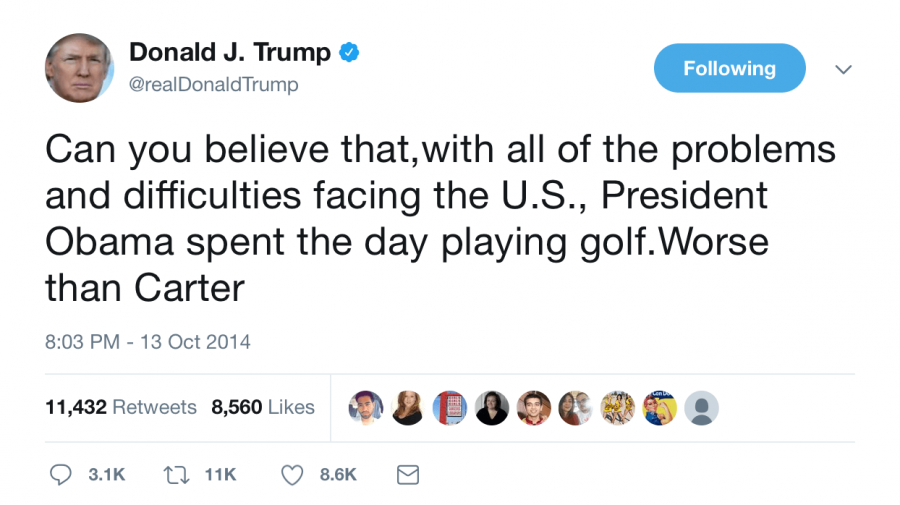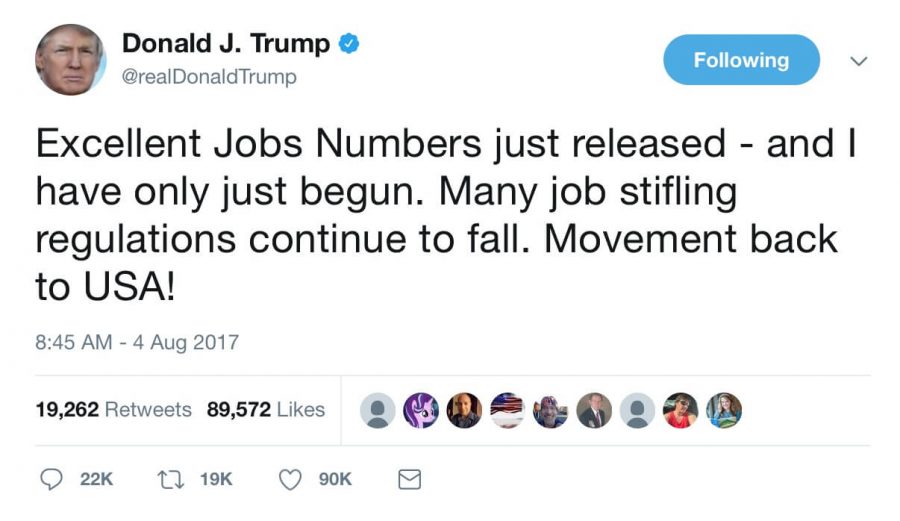Despite being on the job for just ten days, it turns out Trump’s briefly employed communications director, Anthony Scaramucci (known colloquially as “The Mooch”), had a plan to try and turn around the White House’s dysfunctional communications team. But thanks to his now infamous profanity-laced phone call with Ryan Lizza of the New Yorker that saw him sacked by newly appointed Chief of Staff, General John F. Kelly, Anthony Scaramucci’s big ideas for getting the White House back on message and controlling the narrative never came to fruition.
That plan, which was released to the press last week, called for a major overhaul of the department he was about to head. Let’s break down some of The Mooch’s offerings and deliver some insights into what the shortest-lived communications director had planned for shaking-up a White House marred in turmoil:
Priority 1 – Improve the Culture
Scaramucci’s number one priority was to improve the culture in the communications department and this started with making nice with the press. To say relations with the media under the Trump administration need a drastic overhaul is an understatement. Trump, and his surrogates’ constant railing against fake news and declaring the press the “enemy of the American people” have drastically hampered the White House’s ability to communicate with the public other than through the president’s off-message Twitter account. While Trump will never admit it, the success of his presidency, and that of the Republican Party in the upcoming midterm elections requires a healthy relationship with the press. Bashing reporters while complaining about the mainstream media’s so-called “liberal agenda” does nothing but harm your chances of electoral success. Ask anyone who has worked on an election campaign and they’ll tell you that having hostilities with the people who help deliver your message to the public is not helpful — to put it lightly.
When you’re in the business of running the most powerful government on earth, professionalism is paramount. The Mooch called for enacting “a series of professionalizing initiatives immediately.” This included the basics like returning reporters phone calls and emails and treating colleagues with respect. Something a skilled communications team should be doing from the get-go. The Mooch also demanded an end to the threats about leaking information to the press, saying anyone who doesn’t work in the president’s best interest will be dismissed. That’s a bit rich coming from the guy who told Lizza of the New Yorker he wanted to “kill all the leakers” in his infamous phone call. So much for treating your colleagues with respect!
Constant infighting among those in the West Wing, particularly when President Trump himself publicly attacks his own cabinet, makes it nearly impossible to project a unified message. It was most obvious with former White House Press Secretary, Sean Spicer, who was constantly blindsided by President Trump’s early morning tweets, effectively derailing his own administration’s key messages.
Priority 2 – Comms is a Customer Service Operation—POTUS is the Number One Customer
Scaramucci planned to restructure the communications department to serve what he called its “various customers”. This included establishing a group dedicated to PR efforts for POTUS and his family. The goal was to “humanize POTUS and burnish his image.” The Mooch suggested the White House play up Trump’s golfing credentials, claiming him to be the best golfer to ever serve as president. Unfortunately for Scaramucci, drawing attention to a president who has hit the links some 43 times in his 200-some days on the job probably wouldn’t sit well with the public, particularly when the majority of the population is devoid of much paid vacation at all, let alone when they’re the ones footing Trump’s bill on the course. Oh, and those tweets where Trump attacked Obama golfing — we can’t forget those! (For the record, in Obama’s first 100 days in office, he golfed once. Trump has golfed 19 times).

The Mooch also wanted to set up a crisis response team that one can only assume is to deal with the president’s 140 character morning rants in hopes of keeping the government’s key talking points on track. While every government (and company for that matter) should have a crisis response plan in place, it’s impossible to implement a successful response strategy when your organization is not aligned and constantly contradicts itself with mixed messages. Whether or not Scaramucci had the power to persuade President Trump to get on board with his plan, this was almost certainly doomed to fail, especially when it seems he acknowledged that Trump will always be Trump when it comes to bashing the media and going off-message — that is something his team would just have to swallow.
Priority 3 Make the News—We Go First
Governments have tremendous power over the news cycle. Market-moving announcements are timed for certain hours of the day depending on whether it’s good news or bad, and policy plans can be leaked to distract from possible embarrassing news that could harm government support. It’s a carefully choreographed dance, but as mentioned above, when President Trump consistently derails his comms team’s announcements, shaping the conversation can be extremely difficult. That’s why Scaramucci wanted to do a much better job in preparing cabinet members and surrogates for interviews.
Time after time we’ve seen completely different messages coming from people who are clearly on different pages despite claiming to speak on behalf of the same government. Just recently, Trump has been beating the drums of war, declaring the US will unleash “fire and fury” on North Korea, while at the same time his Secretary of State, Rex Tillerson, is telling Americans they’ve got nothing to worry about. If there was ever a time when words matter, it would be when the leader of the free world is discussing nuclear war.
The Mooch knew how critical it was to make sure everyone stuck to the same talking points, and called for his team to act as “gatekeeper/air traffic controller over all external communications.” This is a common-sense strategy, but unlikely to work if Trump continues to unleash on Twitter and constantly go off-script.
Priority 4 – Fill the Content Void
We’ve all heard the saying “content is king,” which is especially true in a 24-hour news cycle. News networks have an insatiable appetite for content, and Scaramucci hit the nail on the head when he says “either we fill it, or they will”. The simple truth is, networks don’t have the capacity to consistently pump out fresh content. Recognizing this, The Mooch wanted Trump to regularly provide op-eds to major news outlets to “produce the story of the day, “ so that the president would set “the terms of the discussion.” This is a great idea, and Obama did this from time to time to forward his agenda.
Op-eds are great for message control, and help contain presidents and corporate leaders who often go off-script, which run the risk of turning into viral soundbites. This is by far one of the best ideas to stand out in his comms plan, and it will be interesting to see if it catches on. On the flip side, one of Scaramucci’s worst ideas was pitching to have President Trump take questions from the public via Facebook Live and other social media platforms. Opening the floodgates to criticism while the world watches live would be disastrous and almost impossible to contain, and if you’ve watched the latest season of House of Cards, you know how that turned out for a certain Republican.
Priority 5 – Jobs, Jobs, Jobs
If there’s been any good news this administration can latch onto, it is the strong job growth that has propelled the US economy since Trump took office. There’s much debate on whether Trump can claim credit, given this upward trend started under Obama’s tenure — well before Trump was sworn in. Regardless of the cause, The Mooch saw this as an opportunity for Trump to own this positive news, and knew the comms team needed to make pretty much every public communication focus on jobs. This makes sense when things are going well, but could backfire should things go sideways (war with North Korea, anyone?).
When you’re building a brand, you want to create an identity that people will associate with you. Trump positioned himself as an outsider businessman who knew how to build billion dollar companies that created hundreds of jobs. This was laying the foundation for branding him as the ‘Jobs President’, and Scaramucci wanted to run every piece of positive job news through his department to spin it to their advantage. Controlling the message this way was also intended to distract from whatever bluster Trump tweeted that morning.
Whether or not the American economy continues to do well, whoever takes over the comms department should follow The Mooch’s advice and trumpet jobs numbers as much as they can. Just don’t tweet about the jobs report like Trump did within an hour of its release, because that violates federal laws that prohibit executive branch members for publicly discussing it. Oops.

While The Mooch didn’t get to stick around long enough to put his plan into action, he did have some good ideas. He wanted to bring discipline and order to a White House comms team that has struggled to stay on-message, play nice with the press and colleagues, and ultimately act like professionals in charge of managing the message of the most powerful office in the world. Who knows what sparked that lewd tirade with Ryan Lizza of the New Yorker. We know it cost him his job. It seems as though Scaramucci was unfamiliar with the concept that you must practice what you preach. In government, business, and in life, your reputation is everything. It takes years to build, and minutes to destroy. If only he listened to his own advice, he may still be working at 1600 Pennsylvania Avenue:
“All Comms actions/decisions need to be evaluated through one and only one prism — does it help POTUS. To this end, I will lead by example and make sure that my overall conduct, tweets, internal and external comments meet this standard” — Anthony Scaramucci


